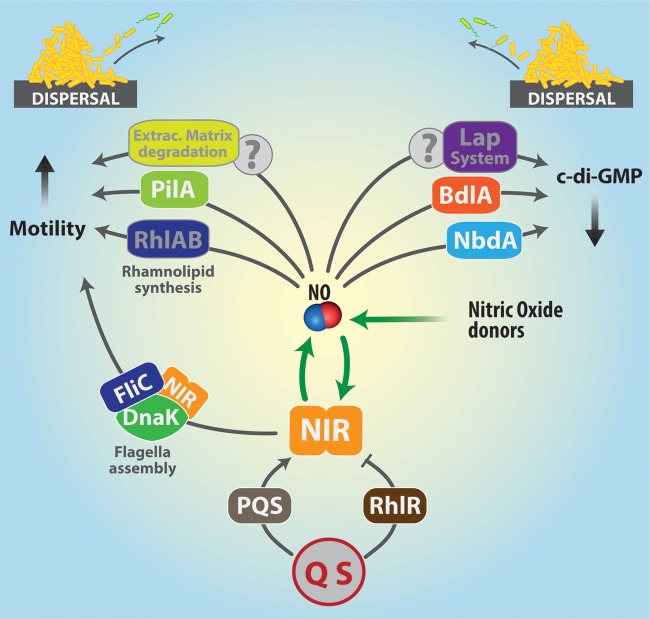FIG 5.
Summary of the possible effects of NO leading to biofilm dispersal in P. aeruginosa. In P. aeruginosa, NO can be produced by the endogenous enzyme nitrite reductase (NIR) or come from external sources (NO donors). Since NO is known to stimulate NIR synthesis, the two sources (endogenous and exogenous) may also cooperate, as shown in the figure. Biofilm dispersal is triggered by events that increase motility by stimulating synthesis of pili (PilA) or rhamnolipids (RhlAB). Flagellum assembly can also be stimulated by the formation of a ternary complex of NIR (in the active and inactive form), FliC (the major flagellar subunit), and DnaK (a chaperone). NO-induced biofilm dispersal also involves the decrease of c-di-GMP intracellular levels. Two major signaling pathways are known to lower c-di-GMP concentrations, namely, those involving the chemotaxis receptor BdlA and the membrane protein NbdA. Another possible effector of c-di-GMP decrease is the Lap system, whose mechanism of action is yet to be fully elucidated. Many details of these processes will require further investigation, to clarify how NO may affect remodeling of the extracellular matrix to facilitate the escape of individual motile cells and to identify which NO-sensitive transcriptional regulators are involved in regulating gene expression during dispersal.

